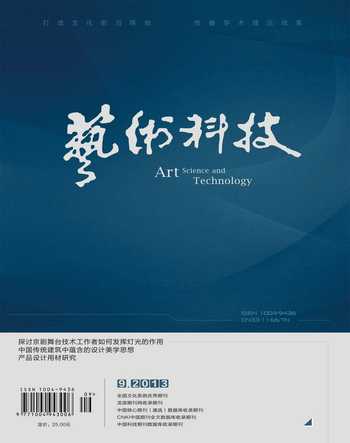A Feminist Stylistic Analysis of Gender瞗ree Pronouns in Sula
2013-04-29张璇
张璇
Abstract:As one of Morrisons early creations, Sula has aroused a lot of concern since its publication in 1973.As a literary discourse of Morrisons artistic and ideological expression, Sula reveals the writers ideological orientation about womens fate and identity.Based on stylistics for its objective analysis of language in literary works and its advantages in revealing deep meaning, this thesis takes a Sara Mills feminist stylistic analysis of the language of Sula, hoping to bring to light Morrisons feminist ideas embedded in the stylistic features of the work.
Key words:Sula; feminist stylistics; genderfree pronouns
Genderfree words are carefully chosen in Sula to criticize generic forms which present the male as an unmarked and the female as a marked form.Many researches have shown that sexist language does have farreaching effects not only in the short term on peoples relation to others and their environment, but also in the long term on their selfimage and confidence.Genderfree words are widely used in Sula, which testifies that Morrison wants to create womens own language, thus challenging the male domain ideology.
Genderspecific words signal a male orientation which was criticized strongly by feminists.The most wellknown and typical example of genderspecific or sexist language is the generic pronoun “he”, and it is frequently referred to as “heman” language, using “he” to refer to both male and female.Genderfree nouns are used deliberately by Morrison to advert the stereotypical views of the sexes.Two aspects can be classified in describing the usage of genderfree words in Sula.
Firstly, femalespecific pronouns are used more frequently in Sula instead of malespecific pronouns, and even genderfree pronouns, thus establishing a high position of female status in the community.In the first paragraph of the first chapter of Sula, the whole story begins with an introduction of the setting, within which there appears such a sentence: the owner cooked in her hat because she couldnt remember the ingredients without it (Morrison, 1982:1).Both “her” and “she” in the sentence are used to refer to the owner whose gender is not clear.There is an option to be chosen because “she” can be seen to contain “he” within it.
The usage of “heman” language can not be found throughout the novel, representing an attitude that women are by no means a part of men.Besides, the specific pronoun “she” is given overwhelming priority to any other pronouns, leaving a striking impression that this novel focuses on females instead of males.The seemingly common wishes are by no means easy for black women in America with sexual discrimination at that time, while an equal circumstance is created in Sula via the use of genderfree pronouns.
Secondly, genderfree pronouns are used frequently instead of malespecific pronouns in Sula to avoid sexual discrimination.Also in the first paragraph of Sula, a sentence describing the living status of the local people goes like this: they are going to raze the Time and a Half Pool Hall, where feet in long tan shoes once pointed down from chair rungs (Morrison, 1981:3).In this sentence, the term “feet in long tan shoes” which refers to mens sexual characteristics is used, showing a negative attitude towards male, as these words are used to define men.
Genderfree expression of plural pronoun “they” is used to diminish sex distinction, ignoring the existence of male.A typical example appears at the beginning of the second part of the novel, which is a description of peoples reaction to Sulas return to the community.In the first four paragraphs, each sentence begins with the plural pronoun “they”, being used to cover both females and males, which is repeated thirteen times.Besides, such genderfree words as “nobody” and “people” are used repeatedly to refer to all the people in the community, including men and women, creating an effect of not expelling women from the narration.
Through analyzing genderfree pronouns in Sula, female orientation of Morrison can be found.The use of genderfree pronouns makes little alteration on the informational content, but the address of the sentences has changed so that both males and females are equally addressed.Besides, women are foregrounded from the background by using genderfree prouns in Sula, in accordance with Morrisons intention of building a female world.
References:
[1] Bischoff, J.The novels of Toni Morrison: Studies in thwarted sensitivity [J].Studies in Black Literature.1975(6):2123.
[2] Wales, K.Feminist Linguistics in Literary Criticism [M].Woodbridge: Boydell & Brewer,1994.
[3] Wills, S.Specifying: Black Women Writing the American Experience [M].University of Wisconsin Press,1989.
[4] 托妮·莫瑞森(Toni Morrison).秀拉[M],胡允恒,譯.北京:中国社会科学出版社,1988
[5] 王海萌(Wang Haimeng).激情背后的孤寂:《秀拉》中的性别主义[J].四川外国语学院学报,2004(3):4860.
